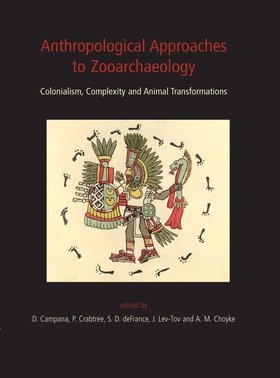
Lägg till önskelistan
Anthropological Approaches to Zooarchaeology e-bok
Pris
115 kr
Animals in complex human societies are often both meal and symbol, related to everyday practice and ritual. People in such societies may be characterized as having unequal access to such resources, or else the meaning of animals may differ for component groups. Here, in this book, 28 peer-reviewed papers that span 4 continents and the Caribbean islands explore in different ways how animals were incorporated into the diets and religions of many unique societies. The temporal range is from the ...
E-Bok
115 kr
Pris
Förlag
Oxbow Books
Utgiven
15 Februari 2021
Längd
320 sidor
Genrer
Historia & Arkeologi, Fackböcker
Språk
English
Format
epub
Kopieringsskydd
Vattenmärkt
ISBN
9781842178799
Animals in complex human societies are often both meal and symbol, related to everyday practice and ritual. People in such societies may be characterized as having unequal access to such resources, or else the meaning of animals may differ for component groups. Here, in this book, 28 peer-reviewed papers that span 4 continents and the Caribbean islands explore in different ways how animals were incorporated into the diets and religions of many unique societies. The temporal range is from the Neolithic to the Spanish colonization of the New World as well as to modern tourist trade in indigenous animal art. The volume explores various themes including the interaction of foodways with complex societies, the interaction between diet and colonialism and the complex role that animals, and parts of animals, play in all human societies as religious, identity markers, or other types of symbols. Organized according to these themes, rather than geographic location or time period, the papers presented here crosscut such divisions. In so doing, this book presents an opportunity for scholars divided by geography especially, but also by temporal period, to explore each other's research and demonstrate that different archaeological settings can address the same problems cross-culturally.




